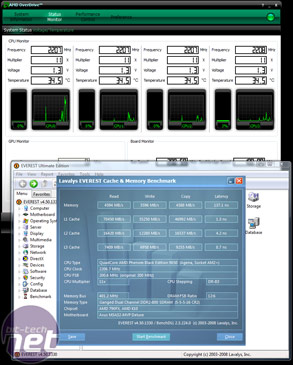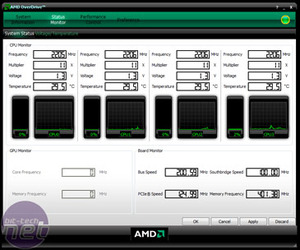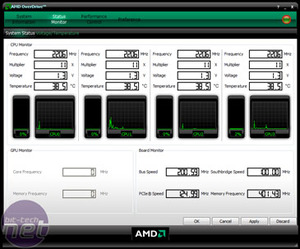
AMD's Phenom X4 9850, 9750 and 9550 processors
Manufacturer: AMDPhenom has had a difficult birth and was a troublesome child, but now AMD’s native quad-core processors have reached their highly anticipated B3 stepping it seems the CPUs have matured for the better. The well documented TLB (Translation Look-aside Buffer) erratum on the original B2 steppings hindered their mass acceptance, but it was widely blown out of proportion for the majority of users who will never see an issue.
Despite this, a BIOS level TLB workaround is now included in most AM2+ motherboards and unfortunately AMD recommends enabling it by default. This caused no end of grief when we installed Service Pack 1 for Windows Vista x64, and even disabling the workaround in the BIOS caused crippling performance issues – instead of the usual ~65ns latency we were seeing three times that at ~140ns.
Not surprisingly, this resulted in a significant performance drop in many tests we were running and left us scratching our heads for a little while. We installed the latest AMD OverDrive software (2.0.17) and found the top right hand side button was still green, meaning the TLB workaround was still enabled. To say we were a little miffed about having to load the program with Windows on every reboot to check the setting, would be an understatement.
This little button has three modes – green, yellow and red. Yellow and red disable the workaround, improving performance, and red disables some of the power management features leading to a "more ready" processor and potentially better overclocks (in the same way it does for Intel processors), providing you can keep it cool that is. Going from green to yellow to red causes the temperatures to increase significantly and as the fastest Phenoms are 125W TDP rated, extra voltage for overclocking will only add to this.
The latest B3 Phenoms not only have a fixed silicon without the TLB problem, but during CeBIT AMD explained that it was continually improving its process technology, and instead of “big jumps like Intel” (re: 65nm to 45nm, however what about Intel’s 65nm G0 versus B3?) the Phenom B3s were a mix of the current 65nm node and some new 45nm process technologies. This is unsurprising considering how resistant to clock speed increases the B2s were, and to remain competitive AMD had to up its game and continually improve its manufacturing, despite its limited Fab space.
Phenoms also get a “new” name too (well, reinstated) – now we have tri-core Phenom X3s and quad-core Phenom X4s in addition to the 8000 and 9000 branding. AMD did intend to launch with the X-nomenclature, however it went for simpler four digit product names instead. To be honest, we don’t know why AMD dropped it in the first place – the logical decision would have been to continue the X-branding from the Athlon X2s to retain customer recognition.
Unlike Intel’s 45nm mainstream products, you can buy a B3 Phenom in plenty of places in the UK in all available speeds: 9850, 9750 and 9550. The 9850 has a faster 2GHz northbridge frequency (that also governs the L3 cache frequency) and 2GHz of HyperTransport 3.0 bandwidth (equating to a bidirectional 4MT/s). What’s more, it even comes in a Black Edition flavour with an unlocked multiplier for enthusiasts to have some fun with.

MSI MPG Velox 100R Chassis Review
October 14 2021 | 15:04












Want to comment? Please log in.